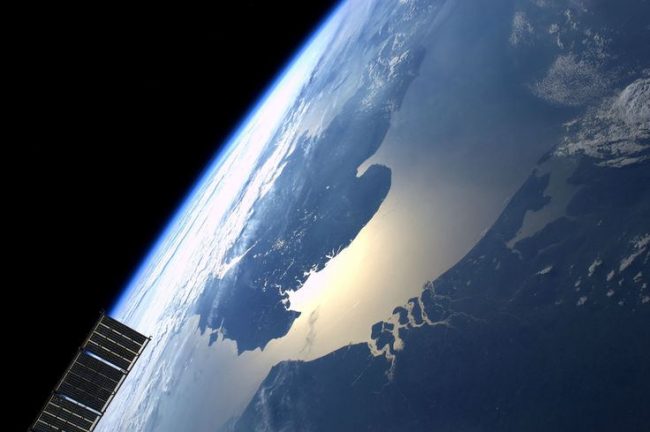- How Much Longer Will We, a People, Accept a Fact That Our Government Ignores Us?
- How Can ADHD Affect Your Life?
- Ja’Mal Green Takes Top Spot on Mayoral Ballot
- Rick and Morty Prefinale Season 6 Review
- TNS, and My Endeavor Into It
- Actress Kirstie Alley Dies during Age 71
- The USPS Is a Hot Mess and Needs a Major Reformation
- Do It Now: There Is No Promise That Tomorrow Is a Reality
- Kanye West Seems to Have Lost His Mind
- Why World AIDS Day Is Important [Video]
Satellite Can Track Poverty
- Updated: August 24, 2016

According to The Verge, a group of Stanford University researchers has grown a some-more fit approach to lane a misery of a world. They are also means to see crop conditions on farming farms and illegal deforestation around a world, in tough to strech places. Scientists can do this with a origination of a low training algorithm that can commend signs of misery by satellite images.
How Does It Work?
Creating a algorithm concerned a twin routine called transfer learning. In a initial step, researchers build the information with a sensory network of images taken during a day and night. This information includes images of 5 African countries: Malawi, Uganda, Nigeria, Tanzania, and Rwanda. The indication was taught, by regulating low training techniques, to expect where lights would be during night, in contrariety to those during a day, and hunt for correlations. This helps a satellite to find probable areas of misery in a African countries.
The indication and scientists can distinguish between a areas that should be dim during night, like lakes and mud roads, and disregard those, contra villages that are well-lit and populated. The images are delicately reviewed by researchers and governments, in efforts to assistance a bad communities in a 5 African countries.
The second step of a process involves researchers regulating a opposite indication called a ridge retrogression model. Scientists use this model, in a algorithm, to feed a satellite some-more information. The information includes genuine consult statistics taken from World Bank Living Standards Measurements Study and Demographic Health Services.
The indication does not only learn that 10 houses in a encampment will many expected meant a certain volume of lights, it cross-checks it with a consult information it has been given. For example, if 10 houses have an income of $1.90 a day, it will now ascertain a houses that do not have any consult information reason identical wealth.
The Idea Behind Tracking Poverty by Satellite
Poverty is harder to magnitude in building countries. Although household surveys give feedback on mercantile data, like resources and domicile wealth, it does not show a mercantile growth. Neal Jean, a study’s co-author and doctoral claimant during Standford, settled that unfortunately, information is not accessible for many of a poorer countries given a surveys are costly to conduct.
The thought is that if we sight a models right, they assistance us envision misery in areas where we don’t have a surveys, that will assistance out assist orgs that are operative on this issue.
Jean says that send training is a many accurate gauging of a normal resources of villages and domicile consumption. However, there are boundary to this method. An economics researcher during a London School of Economics, Simon Franklin, reported that a complement does good when looking during a farming and civic areas and a differences in poverty.
Franklin goes on to explain that a satellite does not magnitude misery in cities well. The reason being is that incomparable cities have both bad and abounding areas in tighten proximity making it harder to use daytime imagery alone.
NASA has available night lights given 2012, regulating a new and some-more accurate satellite. According to economist Alexi Abrahams from a University of California, NASA’s satellite does not use a comparison array images, that are being used for a stream studies in African countries.
However, Jean points out that another extent to a satellite’s record is that it is looking, specifically, during African countries. Therefore, a satellite information would not be as accurate if it had to envision misery in China or India, that are densely populated. Since a process is inexpensive and easy to scale and a images are from a open domain a scientists contend a subsequent step is to work on other countries so they can improved map misery around a world.
By Tracy Blake
Edited by Jeanette Smith
Sources:
The Verge: Satellite images of Earth assistance us envision misery improved than ever
Science: Combining satellite imagery and appurtenance training to envision poverty
The Christian Science Monitor: How satellite images and low training can quarrel tellurian poverty
Los Angeles Times: How to lane misery from space
Image Courtesy of NASA’s Marshall Space Flight Center Flickr Page – Creative Commons License
Satellite Can Track Poverty combined by Tracy Blake on Aug 24, 2016
View all posts by Tracy Blake →
